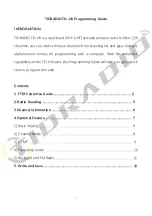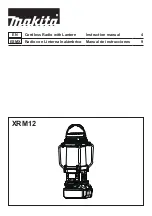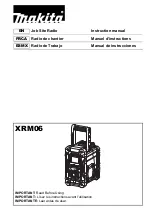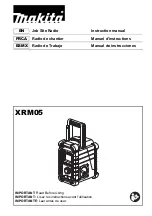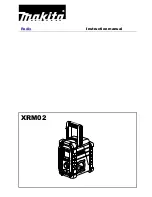
74 |
Radar presentation and video processing |
Argus Radar Operator Manual
Particulars of SART sweeps
The information described in this paragraph has been extracted from IMO SN/Circ 197,
Opertion of Marine radar for SART detection.
RACON (Radar Beacon) video presentation
Warning:
The video processing Scan to Scan Correlation could suppress the Racon
return on the display, and may need to be shut off. In order to disable it, refer to para. 3.3.6.
Racons, also called Radar Beacons, Radar Responders, or Radar Transponder beacons, are
receiver/transmitter transponder devices used as a navigation aid, identifying landmarks or
buoys on a marine radar display. A Racon responds to a received radar pulse by transmitting
an identifiable mark back to the radar set. The displayed response has a length on the radar
display corresponding to a few nautical miles, encoded as a Morse character beginning with
a dash for identification. The inherent delay in the Racon causes the displayed response to
appear behind the echo from the structure on which the Racon is mounted. Racons and their
identifying marks are normally indicated on marine charts.
Racons purpose can change with the country it is placed in. Generally they are used for:
•
identify aids to navigation, both seaborne (buoys) and land-based (lighthouses)
•
identify landfall or positions on inconspicuous coastlines
•
indicate navigable spans under bridges
•
identify offshore oil platforms and similar structures
•
identify and warn of environmentally-sensitive areas (such as coral reefs)
In some countries they are also used to:
•
mark new and uncharted hazards (these should use the Morse identifier “D”)
•
identify centre and turning points
•
leading line racons.
Racon technical characteristics
Generally Racons are frequency agile, designed to measure the frequency of all incom-
ing radar pulses, and transmit an approximately 25 microsecond Morse-encoded response
less than 700 nanoseconds later back to the radar on that frequency. The Morse-encoded
response is encoded such that the length of one dash is equal to the one of three dots, and
the length of one dot equals that of one space. All Racons operate over the frequency range
9300-9500 MHz marine radar band (X-band), and most additionally operate in the 2900-3100
MHz marine Radar band (S-band).
Racon range is approximately line-of-sight range, normally over 15 nautical miles, although
actual range depends upon a number of factors, including mounting height, atmospheric
conditions, and Racon receiver sensitivity setting.
Summary of Contents for ARGUS FMCW 3G
Page 1: ...ENGLISH ARGUSRADAR SYSTEM User Manual navico commercial com...
Page 2: ......
Page 149: ......
Page 150: ...988 10185 004...































